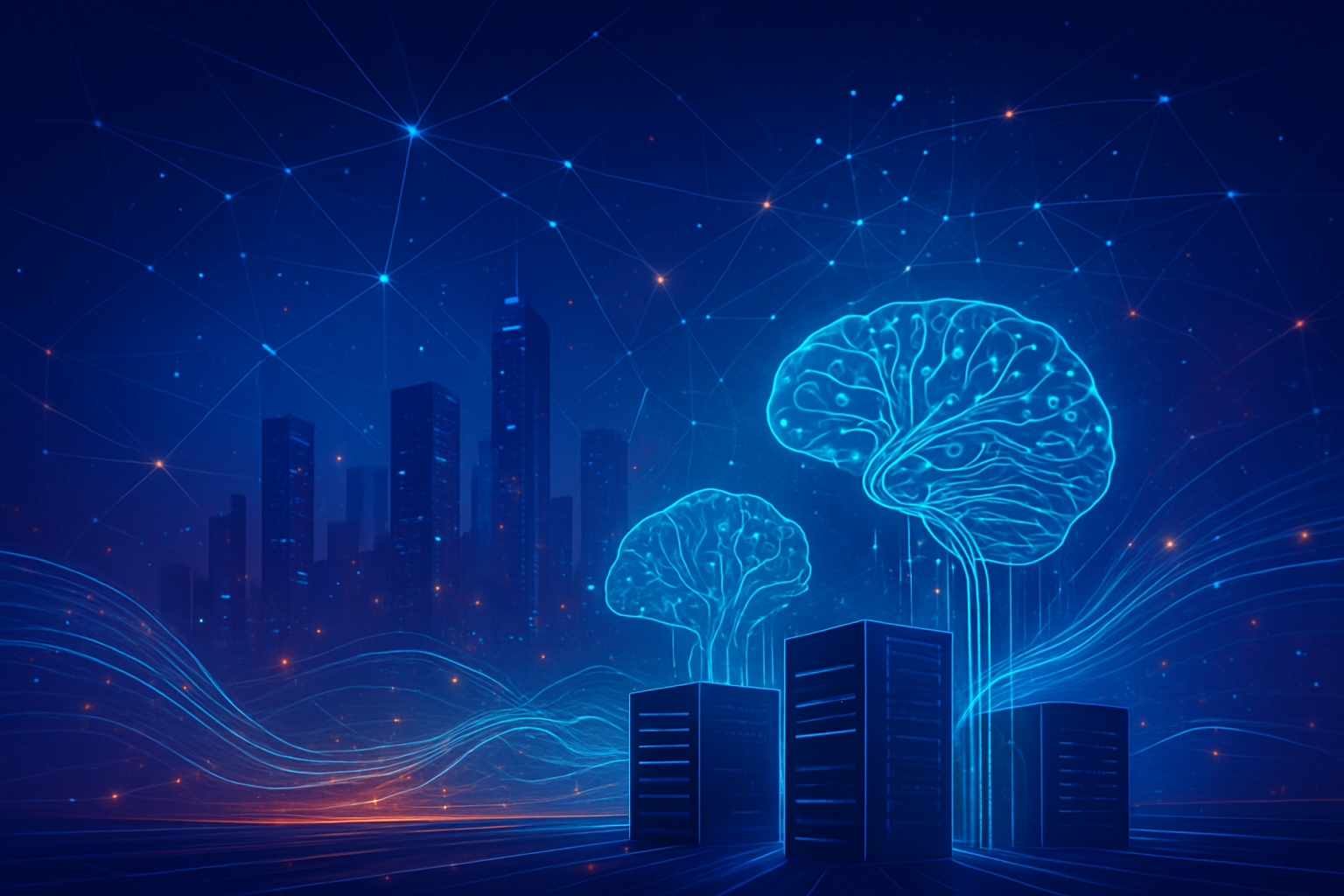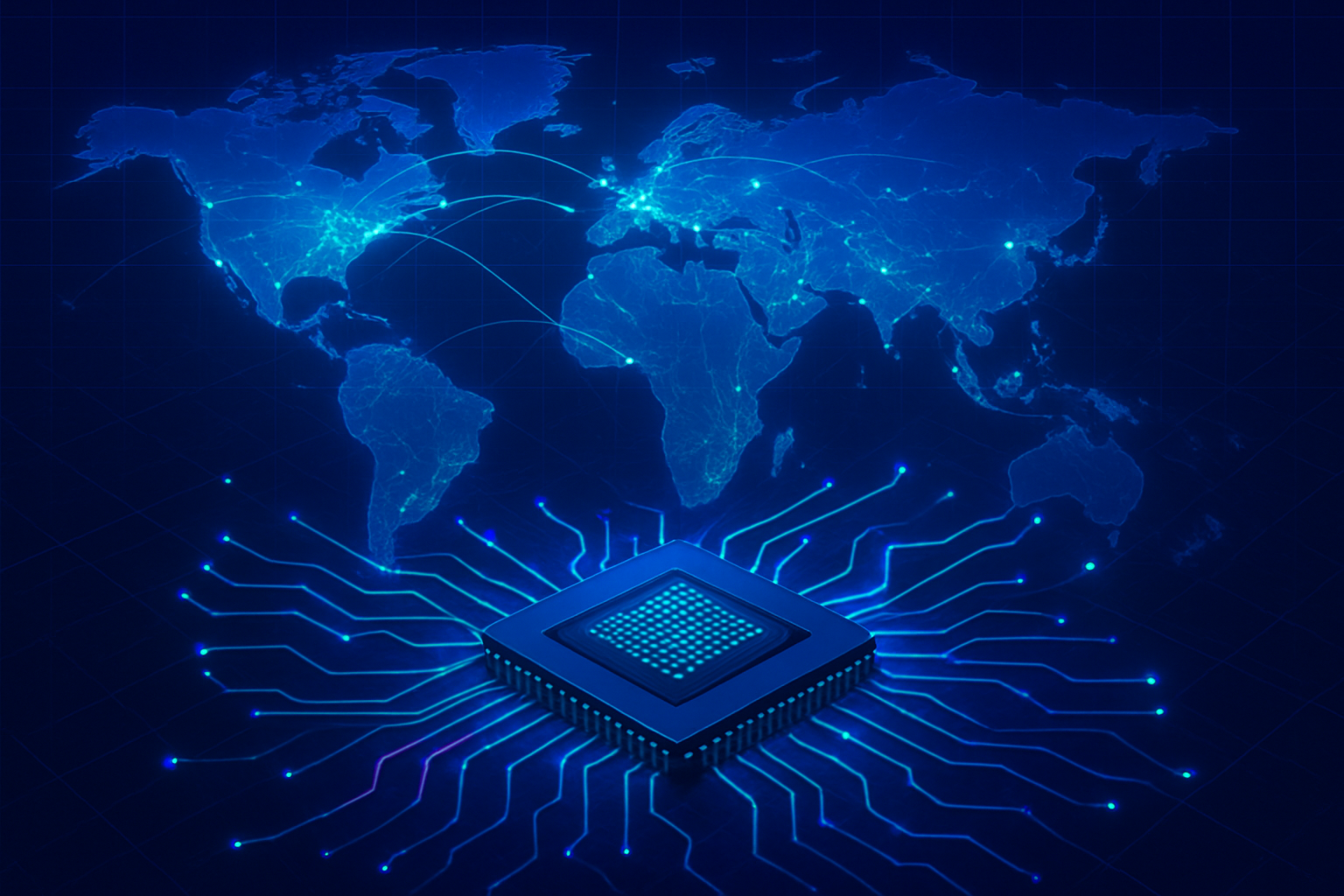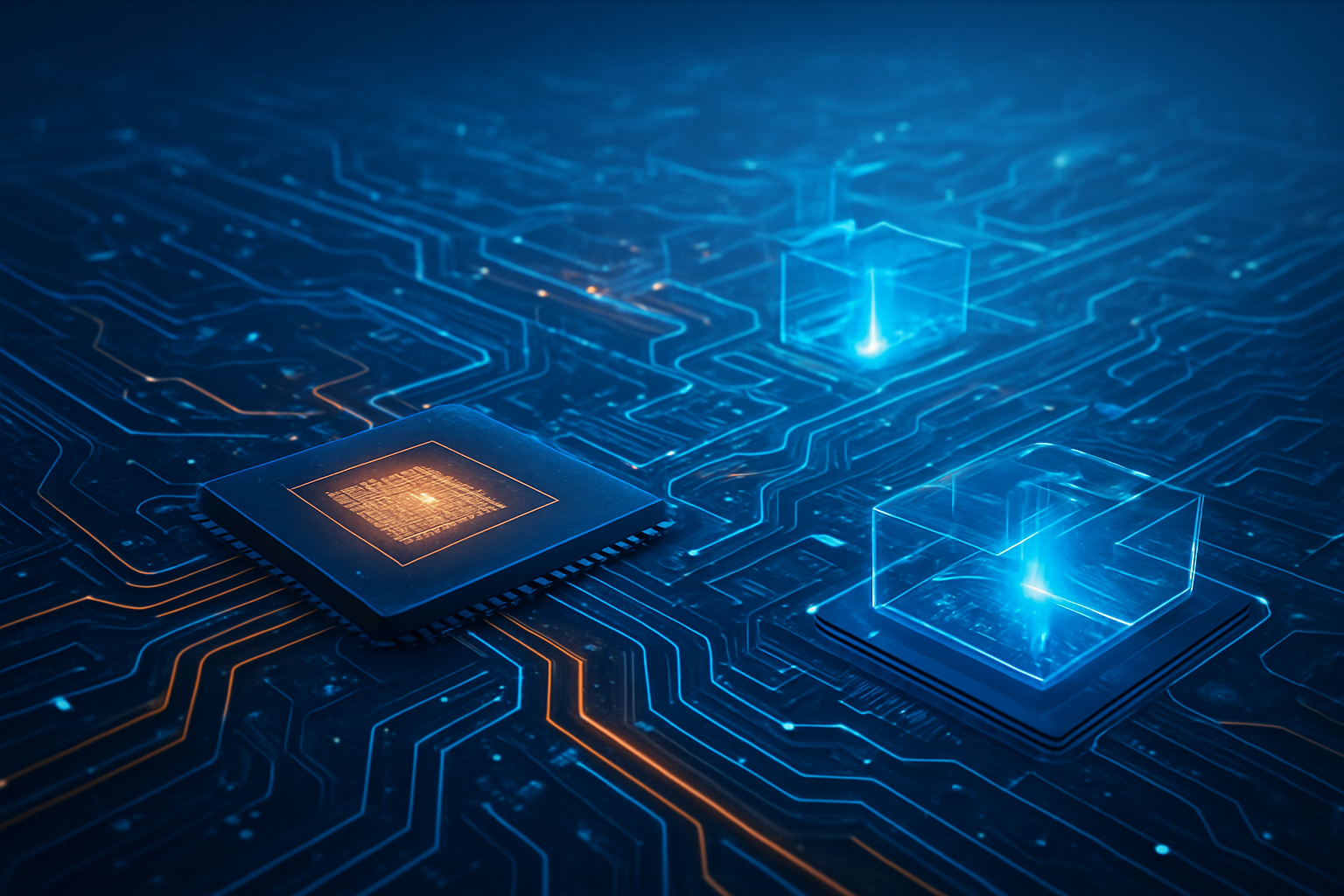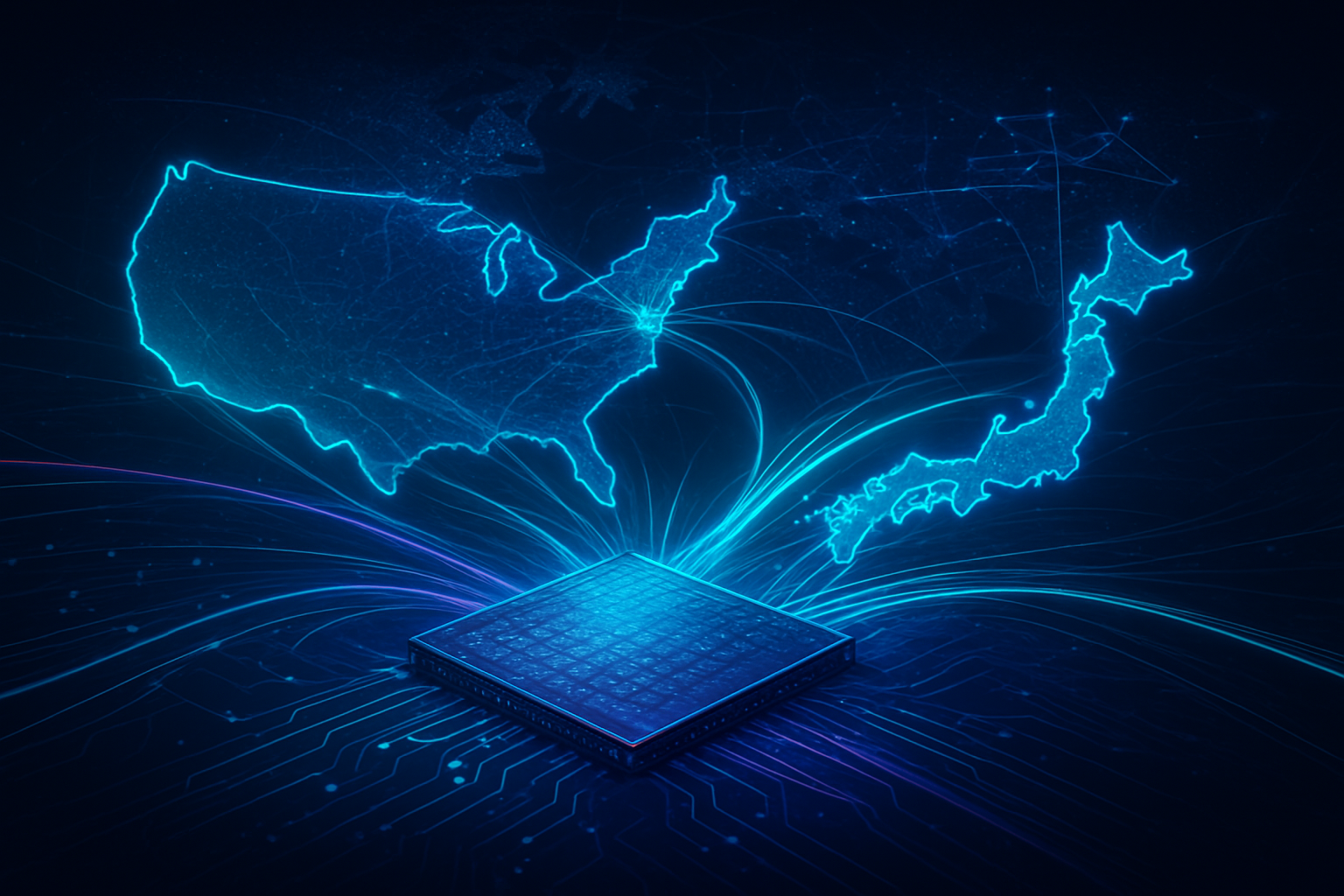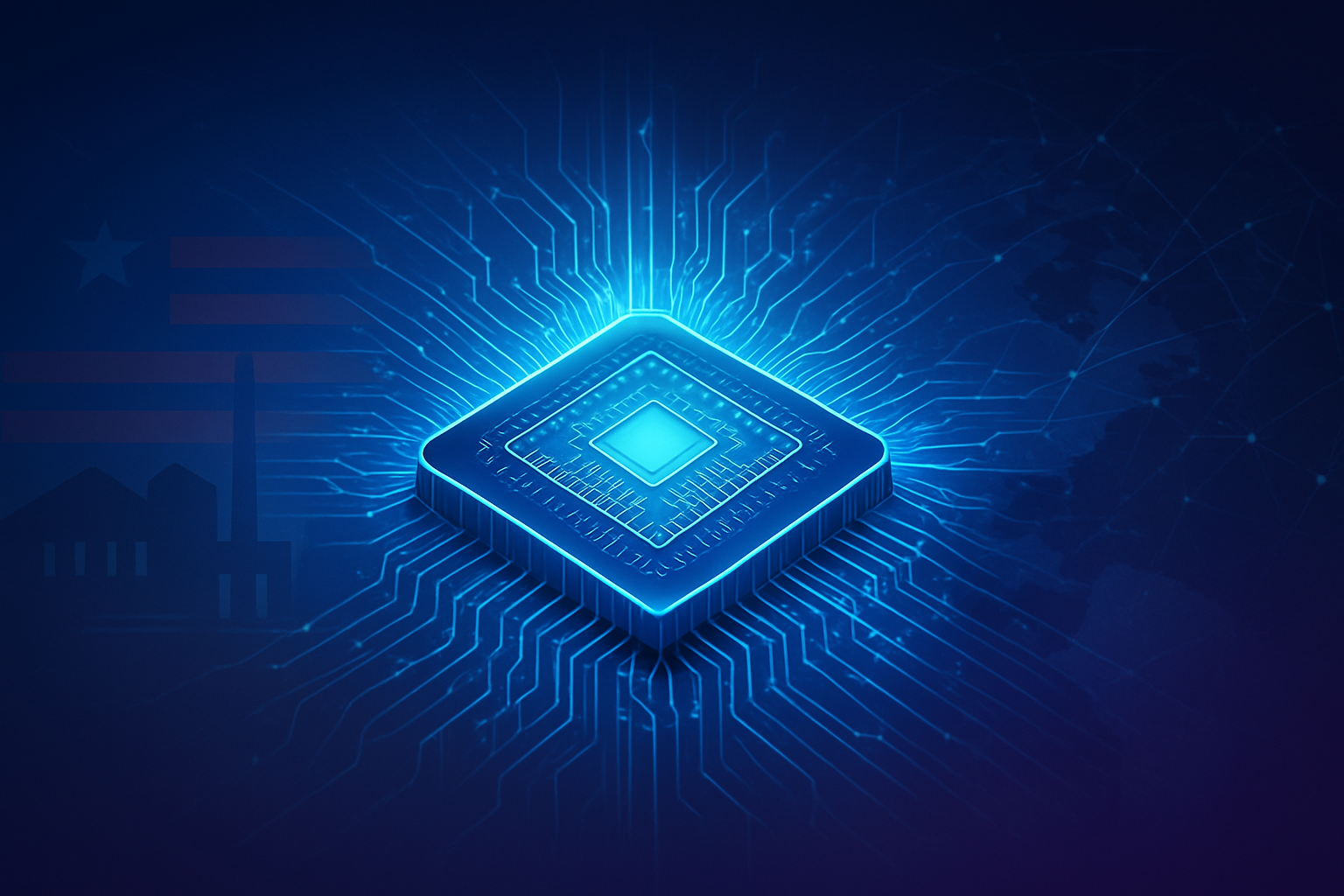The United States is in the midst of a profound strategic pivot, aggressively leveraging trade policies and economic nationalism to revitalize its domestic semiconductor manufacturing capabilities. This ambitious endeavor, primarily driven by concerns over national security, economic competitiveness, and the fragility of global supply chains, aims to reverse a decades-long decline in US chip production. As of November 2025, the landscape is marked by unprecedented governmental investment, a flurry of private sector commitments, and ongoing, often contentious, debates surrounding the implementation and impact of tariffs. The overarching goal is clear: to establish a resilient, self-sufficient, and technologically superior domestic semiconductor ecosystem, safeguarding America's digital future and economic sovereignty.
The CHIPS Act and the Tariff Tightrope: A Deep Dive into Policy and Production
The cornerstone of this nationalistic push is the CHIPS and Science Act of 2022, a landmark bipartisan legislative effort allocating a staggering $280 billion. This includes $52.7 billion in direct grants and incentives, coupled with a crucial 25% investment tax credit designed to catalyze domestic semiconductor production and research and development. The impact has been immediate and substantial; since the Act's enactment, over $450 billion in private investment has been pledged across 28 states. Giants like Intel (NASDAQ: INTC), Taiwan Semiconductor Manufacturing Company (TSMC) (NYSE: TSM), and Samsung Electronics (KRX: 005930) are among the major players set to receive billions for the construction of new fabrication plants (fabs) and the expansion of existing facilities. These incentives are strategically structured to encourage localization, not only to boost domestic capacity but also to mitigate geopolitical risks and circumvent potential future import duties.
Beyond direct financial incentives, the CHIPS Act explicitly addresses supply chain vulnerabilities, a lesson painfully learned during the COVID-19 pandemic. It aims to reduce reliance on foreign manufacturing, particularly from Asia, by fostering US-driven capabilities across the entire value chain—from manufacturing to advanced packaging and testing. The vision includes establishing robust regional manufacturing clusters, enhancing distributed networks, and bolstering resilience against geopolitical disruptions. In a further move to secure the ecosystem, November 2025 saw the introduction of the bipartisan "Strengthening Essential Manufacturing and Industrial (SEMI) Investment Act." This proposed legislation seeks to expand the CHIPS tax credit to critical upstream materials, such as substrates, thin films, and process chemicals, acknowledging that true supply chain security extends beyond the chip itself to its foundational components, many of which currently see significant reliance on Chinese production.
While the CHIPS Act provides a carrot, tariffs represent a more contentious stick in the US trade policy arsenal. Former President Trump had previously signaled intentions to impose tariffs of approximately 100% on imported semiconductors, with exemptions for companies manufacturing or planning to manufacture within the US. The USTR had also proposed lifting duties under Section 301 to 50% in 2025 on select semiconductor customs subheadings. However, as of November 2025, there are strong indications that the Trump administration may delay the implementation of these long-promised tariffs. Reasons for this potential delay include concerns over provoking China and risking a renewed trade war, which could jeopardize the supply of critical rare earth minerals essential for various US industries. Officials are also reportedly weighing the potential impact of such tariffs on domestic consumer prices and inflation. If fully implemented, a 10% tariff scenario, for instance, could add an estimated $6.4 billion to a $100 billion fab expansion project, potentially undermining the economic viability of reshoring efforts and leading to higher costs for consumers. Alongside tariffs, the US has also aggressively utilized export controls to restrict China's access to advanced semiconductors and associated manufacturing equipment, a measure intended to limit technology transfer but one that also carries the risk of lost revenue for US firms and impacts economies of scale.
Corporate Fortunes in Flux: Winners, Losers, and the AI Race
The assertive stance of US trade policies and burgeoning economic nationalism is fundamentally reshaping the fortunes of semiconductor companies, creating distinct winners and losers while profoundly influencing the competitive landscape for major AI labs and tech giants. The CHIPS and Science Act of 2022 stands as the primary catalyst, channeling billions into domestic manufacturing and R&D.
Foremost among the beneficiaries are companies committing significant investments to establish or expand fabrication facilities within the United States. Intel (NASDAQ: INTC) is a prime example, slated to receive an unprecedented $8.5 billion in grants and potentially an additional $11 billion in government loans, alongside a 25% investment tax credit. This massive injection supports its $100 billion plan for new fabs in Arizona and Ohio, as well as upgrades in Oregon and New Mexico, solidifying its position as a key domestic chipmaker. Similarly, the world's largest contract chipmaker, Taiwan Semiconductor Manufacturing Company (TSMC) (NYSE: TSM), has committed $65 billion to new US facilities, receiving $6.6 billion in grants, with its first Arizona plant expected to commence production in the first half of 2025. South Korean titan Samsung (KRX: 005930) is also building a 4nm EUV facility in Taylor, Texas, backed by $6.4 billion in grants. Micron Technology (NASDAQ: MU), the sole US-based memory chip manufacturer, is set to receive $6.1 billion for its $50 billion investment in new factories in New York. These companies benefit not only from direct financial incentives but also from enhanced supply chain resilience and access to a growing domestic talent pool, fostered by initiatives like Purdue University's semiconductor degrees program.
Conversely, US semiconductor equipment and design firms heavily reliant on the Chinese market face significant headwinds. Export controls, particularly those restricting the sale of advanced AI chips and manufacturing equipment to China, directly curtail market access and revenue. Companies like Nvidia (NASDAQ: NVDA) and Advanced Micro Devices (AMD) (NASDAQ: AMD) have encountered reduced access to the lucrative Chinese market, compelling them to develop modified AI chips for the region, often through complex revenue-sharing agreements. An economic model suggests a full decoupling from the Chinese market could lead to a $77 billion loss in sales for US firms in the initial year and a reduction of over 80,000 industry jobs. Chinese semiconductor companies themselves are the primary targets of these controls, facing immense pressure to innovate domestically and reduce reliance on foreign technology, a situation that has galvanized Beijing's industrial policy to achieve semiconductor independence. Furthermore, any widespread imposition of the proposed tariffs on semiconductor imports (which could range from 25% to 300% under certain scenarios) would significantly escalate costs for virtually every company relying on imported chips, impacting hardware startups, consumer electronics manufacturers, and the automotive sector.
The implications for major AI labs and tech companies are equally profound. The CHIPS Act's push for increased domestic supply of leading-edge chips is critical for advancing AI research and development. US-based AI labs and tech giants such as Google (NASDAQ: GOOGL), Microsoft (NASDAQ: MSFT), Meta Platforms (NASDAQ: META), and OpenAI could benefit from more secure and potentially faster access to domestically produced advanced semiconductors, essential for their data centers and AI infrastructure. However, the specter of significant tariffs on semiconductor imports could substantially raise the cost of AI model training and data center expansion, potentially slowing AI innovation and increasing operational expenses for cloud service providers, costs that would likely be passed on to startups and end-users. This geopolitical bifurcation in AI hardware development, driven by export controls, is forcing a divergence, with US companies designing specific chips for China while Chinese AI labs are incentivized to innovate domestically or seek non-US alternatives. This could lead to fragmented AI hardware ecosystems, impacting global collaboration and potentially hindering overall AI progress due to fragmented R&D efforts. The combined effect of these policies is a complex recalibration of market positioning, with the US striving to re-establish itself as a manufacturing hub for advanced nodes, while the broader industry navigates a path toward diversification, regionalization, and, for China, aggressive self-sufficiency.
A New Global Order: AI, National Security, and the Fragmented Tech Landscape
The aggressive US trade policies and burgeoning economic nationalism in the semiconductor sector transcend mere industrial protectionism; they are fundamentally reshaping the global artificial intelligence (AI) landscape, ushering in an era where technological supremacy is inextricably linked to national security and economic power. As of November 2025, this strategic pivot is driving a complex interplay of technological advancement, intense geopolitical competition, and a reorientation of global supply chains.
The foundation of this shift lies in stringent export controls, progressively tightened since 2018, primarily targeting China's access to advanced semiconductors and manufacturing equipment. These measures, which have seen significant refinements through October 2023, December 2024, and January 2025, aim to impede China's indigenous chip industry and preserve US leadership in the high-performance computing essential for cutting-edge AI. Specific targets include high-end AI chips like Nvidia's (NASDAQ: NVDA) A100 and H100, and critical extreme ultraviolet (EUV) lithography machines. Complementing these controls, the CHIPS and Science Act of 2022 represents a massive industrial policy initiative, dedicating over $70 billion directly to semiconductor manufacturing incentives and R&D, alongside an additional $200 billion for AI, quantum computing, and robotics research. A crucial "guardrails" provision within the CHIPS Act prohibits funding recipients from materially expanding advanced semiconductor manufacturing in "countries of concern" for ten years, explicitly linking economic incentives to national security objectives. While there were indications in May 2025 of a potential shift towards a more "due diligence"-focused system for AI development in allied nations, the overarching trend points to a hardening "techno-nationalism," where advanced technologies are viewed as strategic assets, and domestic capabilities are prioritized to reduce dependencies and project power.
The impacts on the AI landscape are profound. The US currently holds a commanding lead in total AI compute capacity, possessing roughly ten times more advanced AI chips for research, training, and deployment than China, a direct consequence of these export controls. The insatiable demand for AI is projected to drive nearly half of the semiconductor industry's capital expenditure by 2030, fueling sustained growth in AI-driven cloud infrastructure. Moreover, AI itself is becoming a critical enabler for semiconductor innovation, with AI-driven Electronic Design Automation (EDA) tools accelerating chip design, improving energy efficiency, and pushing beyond traditional Moore's Law limits. In response, China has intensified its pursuit of technological self-sufficiency, pouring hundreds of billions into domestic chip production and focusing on indigenous innovation. Chinese companies are developing competitive AI chips, such as Huawei's Ascend series, and advanced large language models, often by prioritizing efficiency and utilizing workarounds. As of November 2025, China is further solidifying its localization efforts by mandating the use of domestically produced AI chips in state-funded data center projects.
However, this strategic realignment comes with significant concerns. The extreme geographic concentration of advanced chip manufacturing, particularly with TSMC (NYSE: TSM) in Taiwan and Samsung (KRX: 005930) in South Korea dominating, presents inherent vulnerabilities to geopolitical disruptions or natural disasters. The rise of "chip nationalism" introduces further friction, potentially increasing production costs and slowing the diffusion of innovation across the global industry. The US-China semiconductor rivalry has escalated into a high-stakes "chip war," fundamentally restructuring global supply chains and exacerbating geopolitical tensions, with China retaliating with its own export controls on critical rare earth minerals. This unilateral approach risks fragmenting the global AI ecosystem, potentially making it harder for the US to maintain overall technological leadership if other nations develop independent and possibly divergent tech stacks. A concerning unintended consequence is that countries unable to access advanced US chips might be compelled to rely on less capable Chinese alternatives, potentially increasing global dependence on Beijing's technology and hindering overall AI development.
Comparing this era to previous AI milestones reveals a distinct shift. Unlike earlier periods where software algorithms often outpaced hardware (e.g., early expert systems or even the initial deep learning revolution relying on general-purpose GPUs), the current wave of AI breakthroughs is actively driven by hardware innovation. Purpose-built AI accelerators and the integration of AI into the chip design process itself are defining this era, with AI chip development reportedly outpacing traditional Moore's Law. Crucially, the strategic importance of semiconductors and AI is now viewed through a critical national security and economic resilience lens, akin to how essential resources like steel, oil, or aerospace capabilities were perceived in previous eras. This represents a fundamental shift from primarily economic protectionism to policies directly tied to technological sovereignty in high-tech sectors. The current landscape is a "geopolitical chessboard," with nations actively leveraging economic tools like export controls and subsidies to gain strategic advantage, a level of direct state intervention and explicit linkage of advanced technology to military and national security objectives not as prominent in earlier AI booms.
The Road Ahead: Navigating Tariffs, Talent, and the AI Revolution
The trajectory of US semiconductor policy and its profound impact on artificial intelligence in the coming years is poised for continuous evolution, shaped by a delicate interplay of economic nationalism, strategic trade policies, and an unyielding drive for technological supremacy. As of November 2025, the near-term landscape is characterized by cautious policy adjustments and significant investment, while the long-term vision aims for robust domestic capabilities and strategic independence.
In the near term (the next 1-3 years), US trade policies for semiconductors and AI will navigate a complex path. While the Trump administration had previously signaled a 100% tariff on imported semiconductors, reports in November 2025 suggest a potential delay in their implementation. This postponement is reportedly influenced by concerns over rising consumer prices and a desire to avoid escalating trade tensions with China, which could disrupt crucial rare earth mineral supplies. However, the threat of triple-digit tariffs remains, particularly for imports from companies not actively manufacturing or committed to manufacturing domestically. A notable policy shift in 2025 was the rescission of the Biden administration's "Export Control Framework for Artificial Intelligence (AI) Diffusion," replaced by a more flexible "deal-by-deal" strategy under the Trump administration. This approach, exemplified by recent approvals for advanced AI chip exports to allies like Saudi Arabia and the UAE (including significant quantities of Nvidia's (NASDAQ: NVDA) Blackwell chips), seeks to balance Washington's leverage with preserving commercial opportunities for US firms, though some lawmakers express unease about the potential spread of advanced chips.
Looking further ahead (3-10+ years), US policy is expected to cement its economic nationalism through sustained investment in domestic capabilities and strategic decoupling from rivals in critical technology sectors. The CHIPS and Science Act remains the cornerstone, aiming to revitalize American semiconductor manufacturing and fortify supply chain resilience. The bipartisan "Strengthening Essential Manufacturing and Industrial (SEMI) Investment Act," introduced in November 2025, further reinforces this by expanding the CHIPS Act tax credit to include upstream materials crucial for semiconductor production, such as substrates and lithography materials. This aims to secure every link of the semiconductor ecosystem and reduce dependence on countries like China, with the ultimate long-term goal of achieving technological sovereignty and solidifying the US's position as a leader in AI and advanced technologies.
The CHIPS Act has already catalyzed substantial progress in domestic semiconductor manufacturing, with over $200 billion committed and 90 new semiconductor projects announced across the US since 2022. By early 2025, 18 new fabrication facilities (fabs) were under construction, reversing a long-running decline in domestic wafer output. Companies like Intel (NASDAQ: INTC), TSMC (NYSE: TSM), Samsung (KRX: 005930), and Micron (NASDAQ: MU) are spearheading these efforts, with TSMC and Nvidia specifically collaborating on producing Blackwell wafers and expanding advanced packaging capabilities on US soil. Despite this momentum, significant challenges persist, including a persistent talent gap requiring a million new skilled workers by 2030, the increasing costs of building and operating advanced fabs, and continued supply chain vulnerabilities. Potential US government shutdowns, as experienced in 2025, also pose a risk by delaying grant processing and R&D partnerships.
The looming threat of new tariffs on semiconductors, if fully implemented, could significantly impact the AI sector. Experts predict such tariffs could increase semiconductor costs by 5-25%, potentially raising the cost of end goods by as much as $3 for every $1 increase in chip prices. This would translate to higher prices for consumer electronics, automotive systems, and enterprise-grade hardware, including the critical infrastructure needed to power AI applications. TechNet, a bipartisan network of technology CEOs, has formally warned that semiconductor tariffs would undermine American innovation, jeopardize global competitiveness in AI, and stall progress in building a resilient domestic semiconductor supply chain, making it harder for companies to build the data centers and processing capacity essential for next-generation AI.
Looking ahead, the demand for AI-driven chips is expected to see double-digit growth through 2030, fueling advancements across diverse sectors. Key applications include data centers and high-performance computing (HPC), where AI is driving significant capital expenditure for advanced GPUs, high-bandwidth memory (HBM), and optical interconnects. AI capabilities are also expanding to edge computing and endpoint devices, enabling more localized and responsive applications. The automotive sector, particularly Electric Vehicles (EVs) and autonomous driving systems, will see a tripling of semiconductor demand by 2030. Defense, healthcare, and industrial automation will also benefit from AI-enabled chips, and AI itself is transforming chip design and manufacturing processes, improving quality and increasing yields.
However, challenges abound. Geopolitical tensions, particularly the US-China "chip war," remain a central concern, impacting global trade and supply chains. The persistent shortage of skilled talent, despite significant investment, continues to challenge the industry's growth. Maintaining a technological lead requires sustained and coordinated R&D investment, while regulatory hurdles and fragmentation, especially in AI, create compliance challenges. Experts predict the global semiconductor market will continue its rebound, with sales projected to reach $728 billion in 2025 and approximately $800 billion in 2026, putting the industry on track towards a $1 trillion milestone before the decade's end. AI is expected to drive nearly half of the semiconductor industry's capital expenditure by 2030, with the market for AI accelerator chips alone potentially reaching $500 billion by 2028. The US is reinforcing its role as a gatekeeper in the global semiconductor supply chain, balancing national security objectives with the commercial viability of its domestic industry, emphasizing resilient operations and public-private partnerships.
Conclusion: A New Era of Techno-Nationalism
The United States is currently navigating a complex and transformative period in semiconductor trade policy and economic nationalism, significantly impacting domestic manufacturing and the global AI landscape as of November 2025. This era is defined by a bipartisan commitment to re-establish U.S. leadership in critical technology, reduce reliance on foreign supply chains, and secure a competitive edge in artificial intelligence.
Key Takeaways:
- Aggressive Reshoring, Complex Implementation: The CHIPS Act is driving substantial domestic and foreign investment in U.S. semiconductor manufacturing. However, it grapples with challenges such as workforce development, project delays (e.g., Micron's New York plant now projected for 2030), and the potential for increased costs from tariffs.
- Tariff Volatility and Strategic Nuance: While the Trump administration has signaled strong intentions for semiconductor tariffs, there is ongoing internal debate and a cautious approach due to geopolitical sensitivities and domestic economic concerns. The actual implementation of steep tariffs on semiconductors themselves is currently in flux, though tariffs on products containing semiconductors are in effect.
- AI as the Driving Force: The insatiable demand for AI chips is the primary engine of growth and strategic competition in the semiconductor industry. Policies are increasingly tailored to ensure U.S. leadership in AI infrastructure, with proposals from entities like OpenAI to expand the CHIPS Act to include AI servers as critical infrastructure.
- Geopolitical Balancing Act: The U.S. is employing a dual strategy: imposing restrictions on China while also engaging in selective trade deals and loosening some export controls in exchange for concessions (e.g., rare earth minerals). Concurrently, it is forging new tech alliances, particularly in the Middle East, to counter Chinese influence, exemplified by significant U.S. semiconductor exports of advanced AI chips to Saudi Arabia and the UAE.
Final Thoughts on Long-Term Impact:
The long-term impact of these policies points towards a more fragmented and regionalized global semiconductor supply chain. Experts predict an era of "techno-nationalism" and a potential bifurcation into two distinct technological ecosystems – one dominated by the U.S. and its allies, and another by China – possibly by 2035. This will compel companies and countries to align, increasing trade complexity. While the CHIPS Act aims for U.S. self-sufficiency and resilience, the introduction of tariffs could ironically undermine these goals by increasing the cost of building and operating fabs in the U.S., which is already more expensive than in Asia. The U.S. government's ability to balance national security objectives with the commercial viability of its domestic industry will be critical. The "policy, not just innovation," approach in 2025 is fundamentally reshaping global competitiveness, with flexible sourcing and strong global partnerships becoming paramount for industry players.
What to Watch For in the Coming Weeks and Months:
- Tariff Implementation Details: Keep a close watch on any official announcements regarding the 100% semiconductor tariffs and the proposed "1:1 domestic-to-import ratio" for chipmakers. The White House's final decision on these policies will have significant ripple effects.
- U.S.-China Trade Dynamics: The fragile trade truce and the specifics of the recent agreements (e.g., permanent lifting of rare earth export bans versus temporary suspensions, actual impact of loosened U.S. chip export controls) will be crucial. Any renewed tit-for-tat actions could disrupt global supply chains.
- CHIPS Act Rollout and Funding: Monitor the progress of CHIPS Act-funded projects, especially as some, like Micron's, face delays. The speed of grant distribution, effectiveness of workforce development initiatives, and any further revisions to the Act will be important indicators of its success.
- AI Investment and Adoption Trends: Continued aggressive investment in AI infrastructure and the market's ability to sustain demand for advanced AI chips will determine the trajectory of the semiconductor industry. Any slowdown in AI investment is considered a significant risk.
- Geopolitical Alliances and Export Controls: Observe how U.S. partnerships, particularly with countries like Saudi Arabia and the UAE, evolve in terms of AI chip exports and technological cooperation. Also, pay attention to China's progress in achieving domestic chip self-sufficiency and any potential retaliatory measures it might take in response to U.S. policies.
This content is intended for informational purposes only and represents analysis of current AI developments.
TokenRing AI delivers enterprise-grade solutions for multi-agent AI workflow orchestration, AI-powered development tools, and seamless remote collaboration platforms.
For more information, visit https://www.tokenring.ai/.
